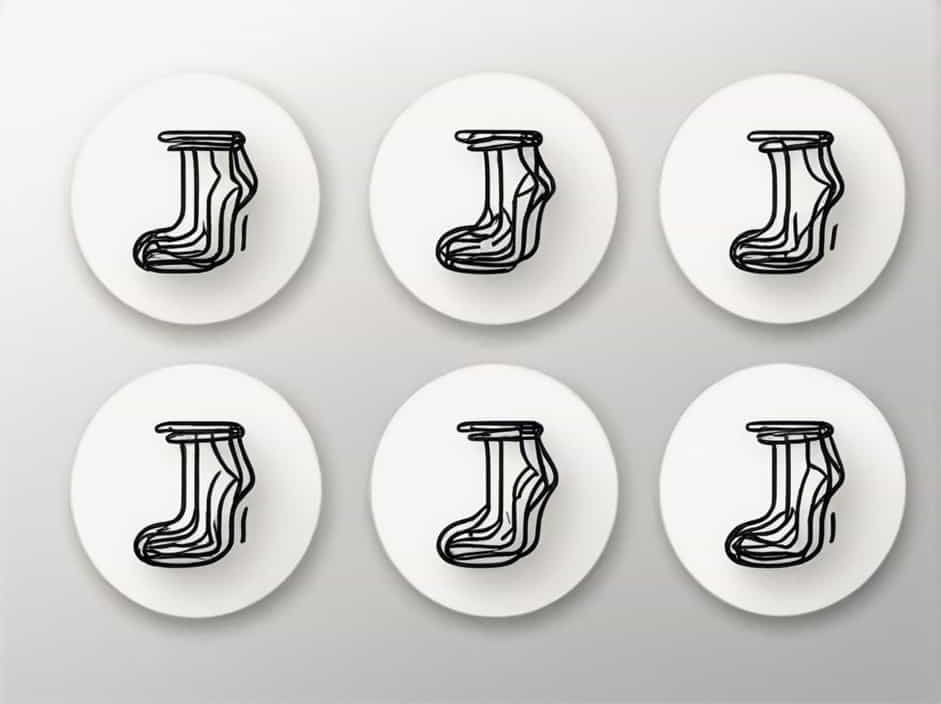The fineness of yarn plays a crucial role in determining the quality, texture, and performance of hosiery fabrics. Whether it is socks, stockings, leggings, or seamless innerwear, the type of yarn used directly impacts the comfort, durability, and stretchability of the final product.
Understanding the unit of fineness of yarn in hosiery is essential for textile manufacturers, designers, and buyers who want to ensure the best fabric selection for their products. This topic explores the various measurement units used to determine yarn fineness, their significance in hosiery production, and factors affecting yarn selection.
What is Yarn Fineness?
Yarn fineness refers to the thickness or diameter of a yarn strand. It determines the weight, softness, and performance of the fabric. Finer yarns create lighter and softer fabrics, while thicker yarns result in heavier and more durable materials.
In hosiery manufacturing, the choice of yarn fineness is crucial because it affects the elasticity, comfort, and appearance of the final product. The unit of fineness is measured using various systems, depending on the fiber type and industry standards.
Common Units of Yarn Fineness in Hosiery
There are several ways to measure yarn fineness, each having different applications in the textile industry. The most commonly used units in hosiery production include:
1. Denier (D) – Most Common in Hosiery
Denier (D) is the most widely used unit for measuring yarn fineness in hosiery. It represents the weight of 9,000 meters of yarn in grams.
- Low denier (10D – 40D) → Used for sheer stockings, lightweight pantyhose, and ultra-soft hosiery.
- Medium denier (40D – 80D) → Common in semi-opaque stockings, leggings, and compression socks.
- High denier (80D – 200D) → Used for thick leggings, winter stockings, and sports hosiery.
A lower denier value means finer and more delicate yarn, while a higher denier value indicates thicker and more durable yarn.
2. Tex (T) – Universal Measurement Unit
Tex is another unit used to measure yarn fineness. It represents the weight of 1,000 meters of yarn in grams.
- Lower Tex value → Finer yarn
- Higher Tex value → Thicker yarn
For example, a Tex 20 yarn means that 1,000 meters of yarn weigh 20 grams. This system is commonly used in industrial textiles and apparel but is less frequent in hosiery compared to denier.
3. Decitex (dtex) – A Variation of Tex
Decitex (dtex) is similar to Tex but measures the weight of 10,000 meters of yarn in grams. It is widely used in Europe for hosiery and synthetic fiber classification.
- 1 dtex = 0.1 tex
- Lower dtex value → Finer yarn
- Higher dtex value → Coarser yarn
For instance, a 20 dtex yarn means that 10,000 meters weigh 20 grams, making it finer than a 40 dtex yarn, which is thicker.
4. Cotton Count (Ne) – Common in Cotton Yarn Hosiery
Cotton count (Ne) is used to measure the fineness of cotton yarn and some natural fiber blends used in hosiery.
- Higher Ne number → Finer yarn
- Lower Ne number → Thicker yarn
For example, a Ne 40 yarn is much finer than a Ne 20 yarn. This system is mostly used in cotton-based hosiery, such as socks and natural fiber stockings.
5. Metric Count (Nm) – Used for Wool & Blended Hosiery Yarns
Metric count (Nm) measures the length of yarn in meters per gram.
- Higher Nm number → Finer yarn
- Lower Nm number → Coarser yarn
For example, a Nm 30 yarn means 30 meters of yarn weigh 1 gram, whereas Nm 10 yarn is three times thicker. This unit is often used for wool-based hosiery and specialty knitted fabrics.
Importance of Yarn Fineness in Hosiery
1. Determines Fabric Transparency & Coverage
The finer the yarn, the more transparent and delicate the fabric appears. This is essential for products like sheer pantyhose, where low-denier yarns (e.g., 10D-20D) are used.
2. Affects Fabric Strength & Durability
Thicker yarns (higher denier, higher tex) create stronger fabrics, making them ideal for sports hosiery, compression socks, and winter leggings.
3. Influences Comfort & Softness
Fine yarns provide a softer feel, which is important for innerwear, stockings, and medical hosiery. Cotton count (Ne) is often considered when choosing soft cotton hosiery.
4. Impacts Stretchability & Elasticity
Yarn fineness affects the stretch and fit of hosiery. Thinner yarns allow better flexibility, while thicker yarns provide stronger compression for medical and sports applications.
Factors Affecting Yarn Fineness in Hosiery Production
1. Fiber Type
Different fibers have different natural fineness:
- Nylon and polyester → Typically measured in denier or dtex
- Cotton → Measured in Ne (cotton count)
- Wool and blends → Measured in Nm (metric count)
2. Fabric Construction
Knit structure plays a role in how the yarn fineness translates into fabric feel. Finer yarns are used for smooth and lightweight fabrics, while coarser yarns are needed for thicker, more structured hosiery.
3. End-Use Application
- Ultra-fine yarns (low denier, high Ne/Nm) → Sheer pantyhose, lightweight stockings
- Medium-fine yarns → Everyday hosiery, semi-opaque leggings
- Thick yarns (high denier, low Ne/Nm) → Compression socks, sports leggings
4. Manufacturing Process & Technology
Advanced spinning and weaving technologies enable better control over yarn fineness, ensuring consistency in hosiery production.
Choosing the Right Yarn Fineness for Hosiery
When selecting hosiery yarn, consider:
- Denier or Tex based on transparency needs
- Ne or Nm for cotton or wool-based hosiery
- Dtex for European hosiery standards
- Stretch & durability requirements
For luxury hosiery, finer yarns like 10D-30D create a delicate look, while for compression and sports hosiery, thicker yarns like 80D-200D provide durability and support.
Understanding the unit of fineness of yarn is crucial for choosing the right materials in hosiery production. Whether measured in denier, tex, dtex, Ne, or Nm, the fineness of yarn directly affects comfort, transparency, durability, and stretchability.
By selecting the appropriate yarn fineness, hosiery manufacturers can create products that meet the desired quality, function, and style requirements.
